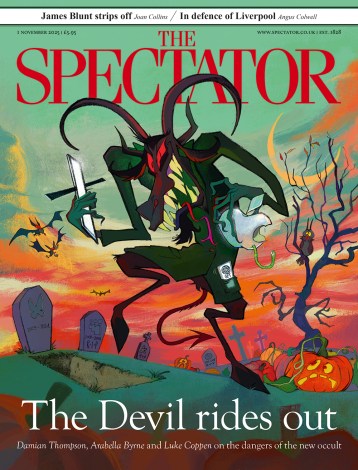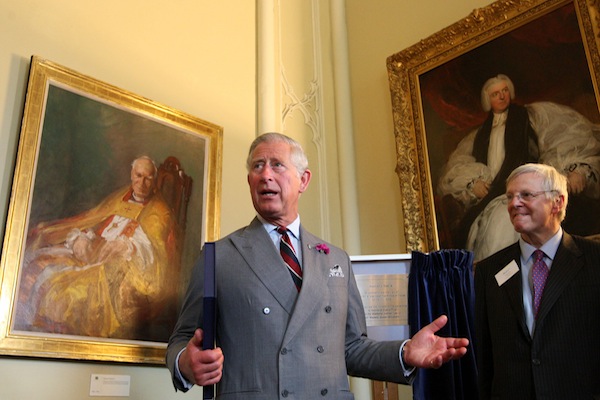Three years ago, on an Ignatian retreat in Wales, two of the staff were taken ill — a priest and a kitchen maid, Maria. At Eucharist, we were given regular updates on the progress of the priest, but radio silence when it came to Maria. Inwardly furious, I raged at the inequality: ‘Who will look after the little guy?’ I thought. A rhetorical question to God is apt to bring about a practical answer, and I determined to change the course of my life, from working in finance to striving for regeneration in the deprived areas of the north-east of England.
But to my great surprise I find myself occupied with bringing the Bishop’s Palace at Auckland Castle back to life. It comes with a throne room, the biggest private chapel in Europe, an important four-acre walled garden and 13 pictures by Francisco de Zurbaran. So where did I go wrong? A life pledged to the poor has been subsumed into the rarified world of Wyatt crenellations — what have they to do with the well-being of local people? Why waste the money on heritage?
Actually, when it comes to waste, pouring money into deprived areas to combat poverty beats everything. When the government has a go, money simply disappears; in the hands of men of goodwill, it is worse still — it’s hard to avoid doing harm. That extends to the donor, too. Those who give their money away know the immediate suffocating consequence: requests come flying in from all four corners of the world. To refuse, or worse, to ignore them, coarsens a donor. The opposite course, giving to all the worthy requests, is to be reactive, when the joy and effectiveness of giving is to be imaginatively active. The halfway house is to put barriers between the recipient and the money, which is why the generous intentions of philanthropists are so often weighed down with application forms requiring social outcomes to be identified and beneficiaries quantified. This stifles the buccaneering, often chaotic spirit of the natural leader for good in society. Just as unconditional love makes the child grow strong, so unconditional giving is key to a healthy society — but it takes years to know who can be trusted unconditionally, and the pressing need is now.
I have come up with my own answer to this conundrum: when people have given up on hope, they need to change how they think, not primarily what they do. A changed mind will change behaviour much more readily than the other way round; the old cliché about ‘give a man a fish, and feed him for a day’ needs rewriting. It should continue ‘teach him to fish, and as often as not he couldn’t give a monkey’s’. Teaching is effective when there is a new-found will to learn. So, in my book, the crucial question is what can money do to break the despair, change the thought process?
A circuit-breaker is needed — something which can startle, and for an instant cut through the monochrome pattern of a dreary and pointless life. There’s nothing to beat religious conversion, as many will gratefully testify, and I deeply respect those who dedicate their life to the winning of souls. But many people find this a far from straightforward path. I think it’s in beauty that many can find a new start. I’m told that Margate folk have a sense of treasure in the sunsets there, because Turner painted them. Never mind that not one in ten know that this Turner is J.M.W., or have ever seen an image of his sunsets: the idea is more powerful than these realities, and thus becomes a more powerful reality than their incidents.
And so with Auckland Castle. It is breathtakingly lovely, rather melancholy and full of hidden history. One part of its history which is not hidden is the reason that the Zurbarans are in the castle, bought by Bishop Trevor in 1756 to bewail the return of oppression to the Jewish community when his Emancipation Act was repealed. We have a powerful symbolism in our two patrons; one is Lord Rothschild, the living exemplar that the pictures have done their stuff, at least in England. The other is the new-laid Archbishop of Canterbury, one of nature’s thugs, which quality, in combination with a heart the size of a rugby ball, should see other oppressions given a good kicking.
I do not look on Auckland Castle as a Cinderella, though she has been much put upon, is melancholy, and in need of a good scrubbing. She is to me a Dulcinea, the lady who inspired Don Quixote to noble deeds. If she can bring a generation in the north-east to fulfilment — to be what they were made to be — then my money will have been gloriously spent.






Comments